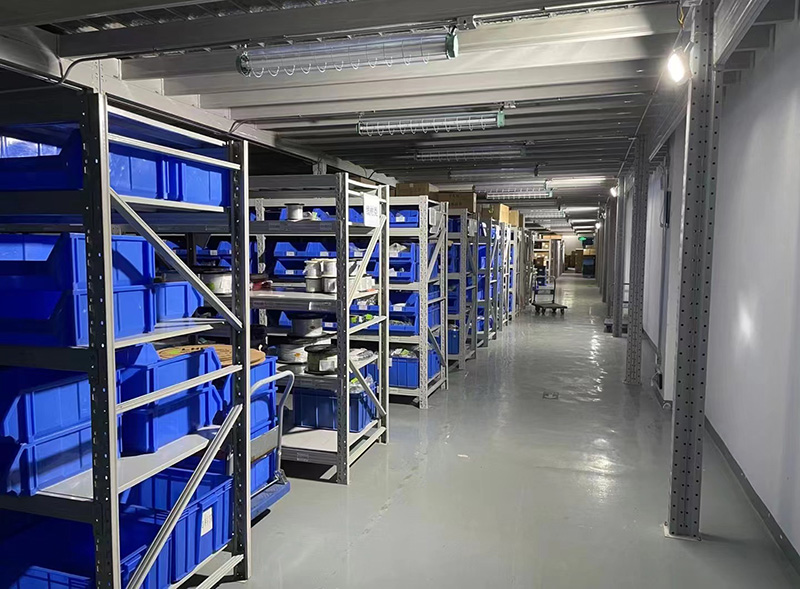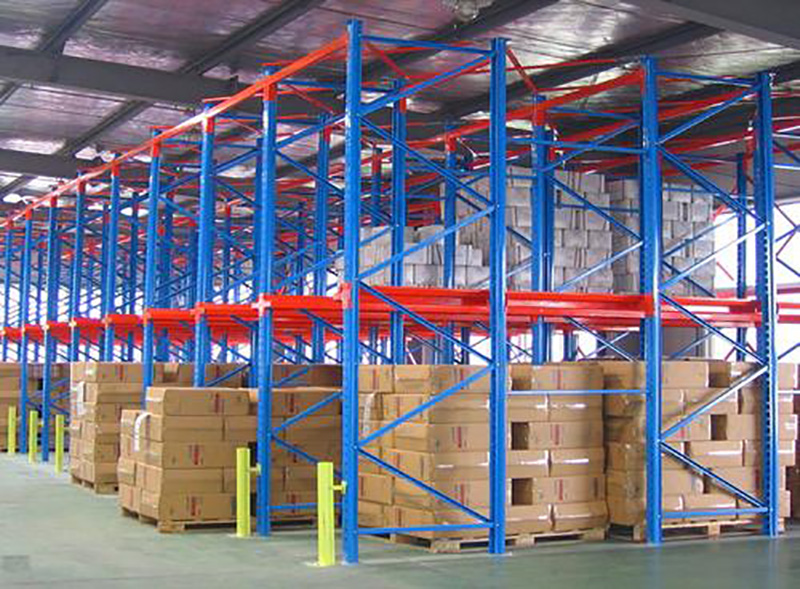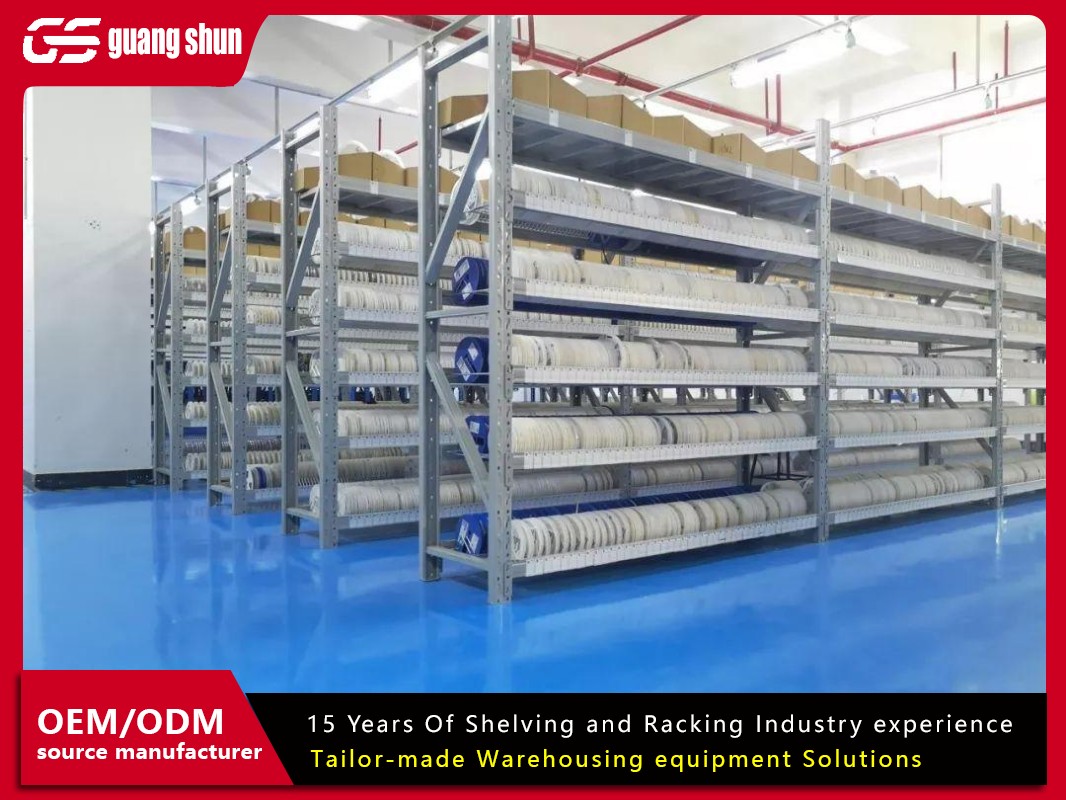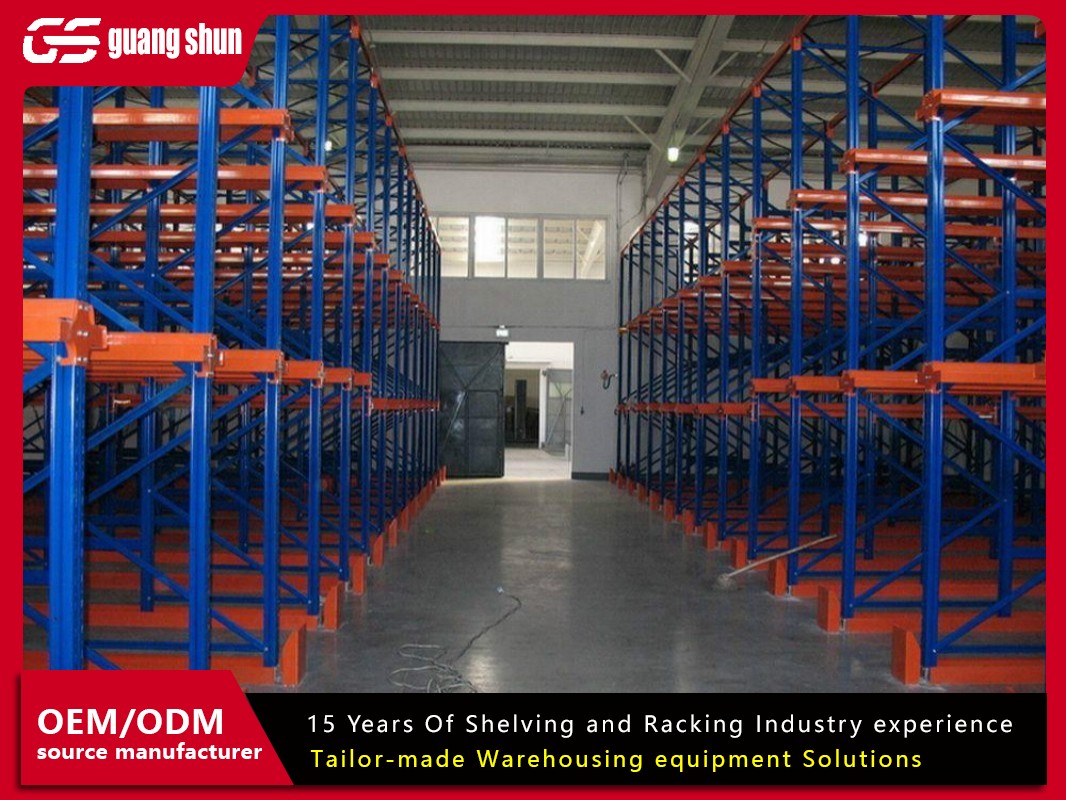In the high-stakes world of logistics, warehousing, and inventory management, maximizing space, efficiency, and safety isn't just a goal – it's a necessity. At the heart of achieving these objectives lies a critical, often understated component: racking systems. Far more than simple shelves, modern racking systems are sophisticated engineered structures designed to store vast quantities of goods safely, accessibly, and cost-effectively. This comprehensive guide delves into the essential aspects of racking systems, exploring their types, components, benefits, selection criteria, and future trends, empowering you to make informed decisions for your storage operations.

1. Understanding the Core Types of Racking Systems
The diversity of products, turnover rates, and warehouse layouts necessitates a range of racking system designs. Choosing the right type is fundamental to operational success.
•Selective Pallet Racking: The undisputed workhorse of warehouses. This versatile racking system offers direct access to every single pallet location via aisles wide enough for forklifts. It provides excellent inventory visibility and rotation (FIFO or LIFO possible), making it ideal for a vast array of SKUs with medium to high turnover. Adjustable beam levels offer flexibility for various pallet heights.
•Drive-In/Drive-Thru Racking: Designed for high-density storage of large quantities of homogeneous products. Forklifts drive directly into the racking system structure itself, with pallets stored on rails on either side of a single, deep lane. Drive-In (last-in, first-out - LIFO) has an entrance at one end. Drive-Thru (first-in, first-out - FIFO) has entrances at both ends. While maximizing cube utilization, access to individual pallets is sequential.
•Push-Back Racking: A dynamic LIFO system offering higher density than selective racking while maintaining reasonable selectivity. Pallets are stored on nested carts on inclined rails. When a new pallet is loaded, it pushes the previous pallet(s) back. Retrieving the front pallet allows the next one to roll forward. Ideal for medium-turnover products with multiple SKUs per lane.
•Pallet Flow Racking: A high-density, high-throughput FIFO system utilizing inclined shelves and gravity rollers or wheels. Pallets are loaded at the higher end of the incline and flow by gravity to the lower end for picking. Excellent for perishable goods, high-volume fast-movers, and batch rotation where strict FIFO is critical.
•Cantilever Racking: Specifically designed for long, bulky, or irregularly shaped items like pipes, lumber, furniture, or rolls. Features strong vertical columns with horizontal arms extending outwards, providing unobstructed access from the front and sides. Essential for industries beyond typical palletized goods.
•Mezzanine Systems: While not strictly a racking type itself, mezzanines create elevated work platforms or storage areas using the vertical space above existing operations, often integrated with racking systems underneath or on the new level, effectively doubling floor space.
•Mobile Aisle Racking (Mobile Shelving): Extremely high-density solution where entire rows of racking are mounted on motorized carriages that move along rails embedded in the floor. Only one aisle is open at a time, significantly reducing aisle footprint. Ideal for cold storage or archiving where space is extremely costly and access frequency is lower.
2. Deconstructing the Key Components of Racking Systems
The strength, stability, and safety of any racking system rely on its core engineered components:
•Upright Frames: The vertical backbone of the system, typically made from heavy-duty roll-formed or structural steel. They consist of two columns connected by horizontal and diagonal braces. Uprights come in various heights, depths, gauges (thickness), and capacities, determined by the load requirements and system height.
•Beams: The horizontal members that support the pallets or loads. They lock into connectors welded or bolted to the upright frames. Beams vary significantly in length (determining bay width), height (beam depth), and capacity. Safety clips or locks are crucial to prevent beams from dislodging during impact.
•Wire Mesh Decking or Steel Decking: Placed across the beams to create a stable platform for pallets, especially important if using non-stringer pallets or preventing small items from falling. Wire mesh allows for light and sprinkler penetration, while solid steel decks offer a more robust surface.
•Row Spacers and Braces: Used to connect multiple rows of racking back-to-back for increased stability, especially important for taller systems. Diagonal braces within the upright frames provide essential resistance to lateral forces.
•Shims and Base Plates: Used to level the racking system on uneven floors. Base plates anchor the uprights to the concrete floor using anchor bolts, providing critical stability and load transfer.
•Guards and Column Protectors: Essential safety features. Post protectors (often bright yellow) shield uprights from forklift impacts. End-of-aisle guards, rack guards, and guard rails protect both the racking and personnel from collisions.
•Load Beams: In cantilever racking, these are the horizontal arms that extend from the columns to support the long loads.

3. The Compelling Advantages of Implementing Racking Systems
Investing in the right racking system delivers a multitude of tangible benefits that directly impact the bottom line:
•Maximized Vertical Space Utilization: The primary advantage. By leveraging the often-underused height of a warehouse, racking systems dramatically increase storage capacity without expanding the building footprint, reducing the cost per square foot of storage.
•Enhanced Inventory Accessibility and Organization: Well-designed racking systems provide systematic organization, making it faster and easier for workers to locate, retrieve, and put away stock. Selective access types ensure quick picking of specific SKUs.
•Improved Safety: Engineered racking systems, when properly installed, loaded, and maintained, provide a stable and secure storage environment. Features like decking prevent falling items, and proper anchoring prevents collapse. Organized storage also reduces clutter and trip hazards on the floor.
•Increased Operational Efficiency: Faster access translates directly to quicker order fulfillment cycles. Optimized warehouse layouts facilitated by racking systems reduce travel time for forklifts and pickers. Efficient organization minimizes picking errors.
•Better Inventory Control and Rotation: Systems like pallet flow ensure FIFO rotation crucial for perishables. Clear visibility and organization within selective racking systems simplify cycle counting and inventory management.
•Protection of Goods: Pallets stored safely off the ground are protected from potential water damage, dirt, and mishandling. Decking provides a stable surface preventing pallet sagging or product shifting.
•Scalability and Flexibility: Many racking systems, especially selective racking, are modular and adjustable. Beam heights can be reconfigured, and systems can be expanded relatively easily to accommodate changing inventory profiles or business growth.
•Cost-Effectiveness: While an initial investment, the long-term gains in space utilization, efficiency, safety (reducing accident costs), and inventory control provide a compelling return on investment (ROI).
4. Critical Factors for Selecting the Right Racking System
Choosing the optimal racking system is not a one-size-fits-all decision. It requires careful analysis of several key factors:
•Inventory Characteristics: What are you storing? Consider pallet size/type, weight per pallet, product dimensions, fragility, and whether items require FIFO, LIFO, or random access. The nature of the goods dictates the most suitable racking type.
•Warehouse Specifications: Detailed measurements are crucial. What is the clear ceiling height? What are the floor conditions (flatness, load-bearing capacity)? Where are columns, doors, sprinklers, and HVAC located? What are the aisle widths dictated by your forklift equipment?
•Forklift Equipment: The type, model, lift height, and turning radius of your forklifts (e.g., counterbalance, reach trucks, narrow-aisle trucks) directly determine the aisle widths required and thus the achievable storage density. VNA trucks enable very narrow aisles with specific racking systems.
•Throughput Requirements: How frequently are items accessed (turnover rate)? High-volume picking operations favor systems with excellent accessibility like selective racking or pallet flow. Slower-moving inventory might be suited for higher-density drive-in or push-back.
•Budget: Initial purchase and installation costs vary significantly between different types of racking systems. Consider long-term operational savings (space, labor efficiency) and potential future reconfiguration costs. Balance upfront cost against total ROI.
•Safety Standards and Compliance: The racking system must be designed, installed, and used in compliance with relevant local and international safety standards (e.g., OSHA regulations in the US, EN standards in Europe, SEMA guidelines in the UK). This includes load ratings, seismic considerations where applicable, and proper anchoring.
•Future Growth and Flexibility: Anticipate potential changes in inventory mix, volume, or operational processes. How easily can the system be modified or expanded? Modular systems offer greater flexibility.
•Supplier Expertise and Service: Partner with a reputable supplier/installer with proven engineering capabilities, a track record of quality installations, and reliable post-sales service and inspection programs.
5. Installation, Maintenance, and the Future of Racking Systems
Implementing a racking system is not a "set it and forget it" endeavor. Ongoing care and awareness of evolving trends are vital.
•Professional Installation: Always use certified installers. Proper installation according to manufacturer specifications and engineered drawings is non-negotiable for safety and structural integrity. This includes precise leveling and correct anchoring into suitable concrete.
•Regular Inspections and Maintenance: Implement a formal, documented inspection program. Trained personnel should conduct regular visual inspections (e.g., weekly/monthly) and more comprehensive, formal inspections at least annually (often mandated by insurers). Look for:Damage to uprights (dents, bends, cracks, especially at base plates or connections)Damaged, bent, or dislodged beamsMissing or damaged safety clips, locks, or connectorsLoose, missing, or damaged anchor boltsOverloaded beams or baysMisaligned frames or leaning racksDamage to decking or wire meshImpact damage on guards and protectorsAny signs of corrosion
•Prompt Repair: Any damage identified must be assessed by a qualified racking inspector or engineer and repaired immediately according to manufacturer guidelines. Never attempt makeshift repairs. Replace damaged components only with approved parts. Tag out and unload damaged sections until repaired.
•Proper Loading: Strictly adhere to the specified load capacities (per beam level, per bay, overall). Distribute loads evenly. Never exceed the maximum height or weight limits. Ensure pallets are in good condition and correctly positioned on beams.
•Employee Training: Warehouse staff, especially forklift operators, must be trained on safe practices around racking systems, including safe maneuvering, correct loading/unloading techniques, and how to identify and report potential damage.
•The Future of Racking Systems: Innovation continues:Integration with Automation: Racking systems are increasingly designed as the structural foundation for automated storage and retrieval systems (AS/RS), shuttle systems, and goods-to-person technologies. Compatibility with automation is a key design criterion.Advanced Materials and Engineering: Use of higher-strength steels, optimized profiles, and advanced engineering software allows for taller, narrower, and higher-capacity racking systems while potentially using less material.Enhanced Safety Features: Improved impact protection systems, integrated sensor technology for monitoring load levels or impacts, and advanced anchoring solutions are emerging.Sustainability Focus: Manufacturers are increasingly looking at the environmental footprint, using more recycled steel, optimizing designs for material efficiency, and considering end-of-life recyclability.Data-Driven Optimization: Warehouse Management Systems (WMS) and data analytics are used to optimize slotting within racking systems for maximum picking efficiency and space utilization based on real-time demand patterns.
Racking systems are the fundamental infrastructure that transforms empty warehouse space into a highly functional, efficient, and safe storage environment. From the versatile selective racking to the high-density drive-in systems and the specialized cantilever designs, the right racking system is a strategic investment that delivers significant returns through optimized space utilization, improved operational efficiency, enhanced safety, and better inventory control. By thoroughly understanding the different types, key components, selection criteria, and the critical importance of professional installation and rigorous maintenance, businesses can leverage racking systems to build a resilient, scalable, and high-performing logistics operation. As technology advances, racking systems will continue to evolve, seamlessly integrating with automation and data-driven processes to meet the ever-growing demands of modern supply chains. Choosing and maintaining the right racking system is not just about storing goods; it's about unlocking the full potential of your warehouse.







